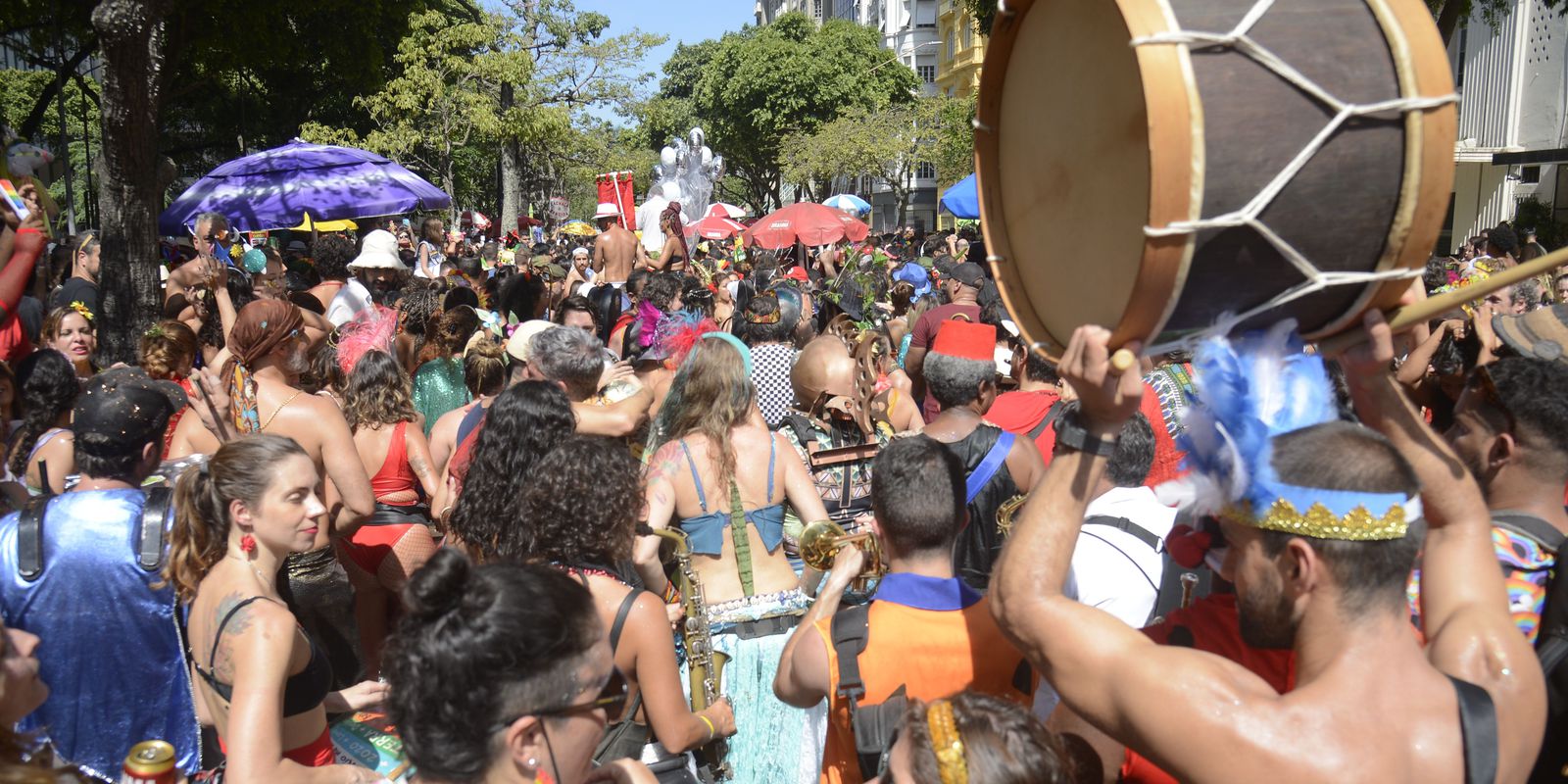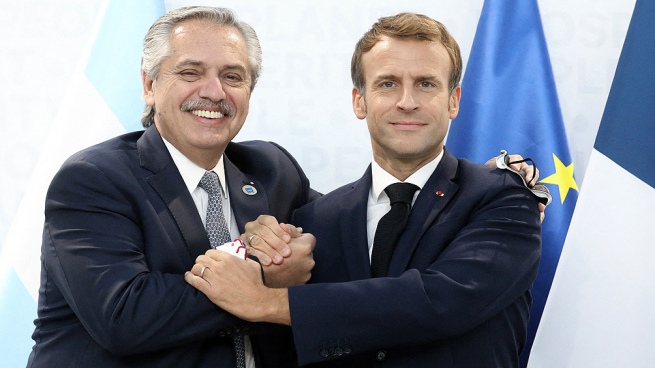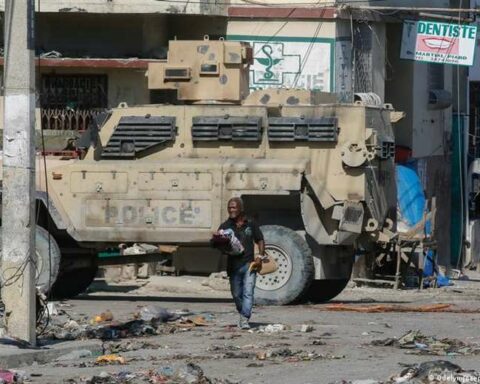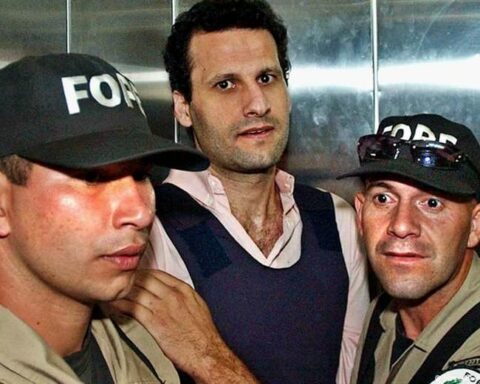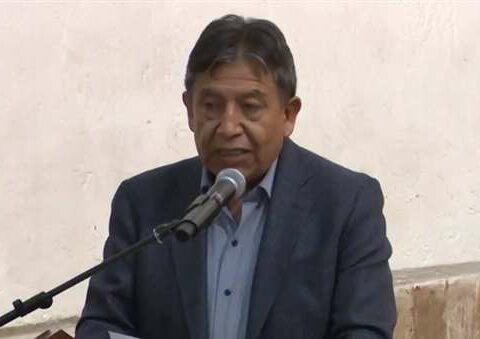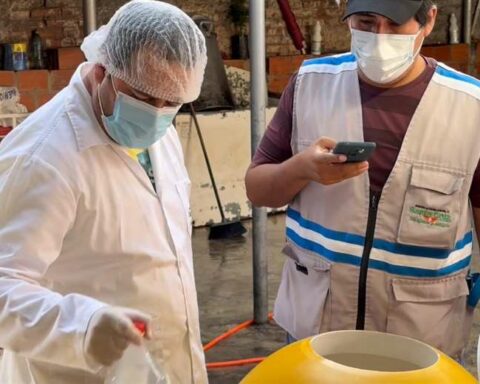René Leigue Cesari was appointed by Pope Francis as Monsignor Sergio Gualberti’s successor. He has indigenous roots and the challenge of taking charge of a large archdiocese. According to 2014 records, the metropolitan region of Santa Cruz de la Sierra had almost two million baptized people. That number of parishioners is an example of the challenge that the new archbishop of the archdiocese will have to assume.
René Leigue Cesari was appointed by Pope Francis as successor to Monsignor Sergio Gualberti, who has already completed 23 years of work, and 75 chronological years, age limit for this responsibility. The canonical norms of the Ecclesiastical Right order to present the resignation in this stage.
Leigue turned 55 in March. He was born in the Nuevo Horizonte community, in the Warnes province, but he is the son of a Chiquitano family, and the oldest of nine siblings.
The presentation ceremony of Leigue as the new Archbishop of the Diocese was attended by Marcial Fabricano, an indigenous leader from the lowlands. “The indigenous people of eastern Bolivia must be happy because here we have a son of indigenous and this is very important because it gives visibility once again to our peoples, who have been marginalized so many times and continue to be so, because only some people in Bolivia are recognized and not all of them,” Gualberti said during the ceremony.
Leigue’s priestly journey has been marked by the presence of Cardinal Julio Terrazas. “When I entered the seminary, the cardinal began his work as archbishop in the archdiocese, I have received ordinations as deacon, priest and bishop from him,” he recalled. Likewise, he recognized that Terrazas’ voice is missed, the one that he made us reflect, and that to date he has left clear guidelines to the Church.
With humility and also caution, Leigue recognized that the challenge of the appointment is very great. “Within the ecclesial one does not come to destroy what already exists, I am clear, but to continue what there is and to improve what is still missing. The work of the Church belongs to everyone. I count on the priests, on the people of God, on the bishops and all the people who are part of the Archdiocese. I don’t come with big promises, it’s not about that, but about making a commitment and moving forward”, he said. He also confessed to feeling a little afraid “because we are human”, but assured that his trust in God’s help is stronger.
Leigue has worked as an auxiliary bishop in the field, and he assured that he will continue working with the people of the rural area.
“We know of your human and spiritual capacities, of your close and servant character, simple and always available, with wisdom to arrange the paths of the Lord and with prudence to welcome those who need words of encouragement and encouragement”, said Gualberti, with whom he has been working for almost a decade.
The indigenous and the land
Asked about the role of the indigenous peoples, from which he comes, he said that they do not ask for more than their share, that things are not invented or exaggerated, but what is theirs. “I think that’s what they don’t understand, they don’t listen to them. Finally, if we are a multinational state, that everyone be taken into account, that is what they demand and will continue to demand. Precisely the meetings they have are to find a way to make their needs felt”, she said.
Census
The new archbishop also spoke about the census process, saying that it is very important to see how we are and in what reality we find ourselves and that the State should be the most interested in seeing how many inhabitants we are and what we need. “We have to continue supporting because we are not going to take advantage of either one or the other,” he said.
CV
He was born in Nuevo Horizonte, Warnes province, on March 24, 1967.. He is the son of Enrique Leigue Becerra and Candelaria Cesari García. He is the oldest of nine siblings, Betty (+), Milsen, Guillermina, Irene, Leonora, Carmelo, Celita, Judith and Humberto.
In 1989 he began his training as a priest at the Holy Spirit Seminary in Sorata, diocese of Coroico. He attended Philosophy studies at the San Lorenzo Archdiocesan Major Seminary in Santa Cruz de la Sierra, obtaining a bachelor’s degree in Philosophy. He studied Theology at the San José Major Seminary, in Cochabamba, and obtained a bachelor’s degree in Theology at the Higher Institute of Theological Studies.
He received his priestly ordination on August 27, 1999, from Archbishop Julio Terrazas. In 2003 and 2004 he enrolled at the Pontifical Alphonsian Academy in Rome, where he obtained a licentiate in Moral Theology.
At the service of the Archdiocese of Santa Cruz de la Sierra, immediately after his priestly ordination, he assumed the following functions:
– From 1999 to 2001 he was Parochial Vicar in the Santísima Trinidad Parish, Santa Cruz de la Sierra.
– From 2001 to 2002 he was pastor of the Cristo Misionero parish.
– From 2005 to 2012 he was parish priest of San José Obrero.
– From 2006 to 2012 he was director of studies at the San Lorenzo Archdiocesan Major Seminary.
– In 2012 he was pastor of the parish of Our Lady of Fatima.
– On October 30, 2012 he was appointed auxiliary bishop of the Archdiocese of Santa Cruz de la Sierra and head of the Church of Nepi.
– He received priestly ordination from Cardinal Julio Terrazas on January 16, 2013.
– He is currently president of the Ecclesial Network of the Bolivian Amazon, Repam Bolivia.
– On September 23, 2020, he was declared an Illustrious Son of Santa Cruz.


